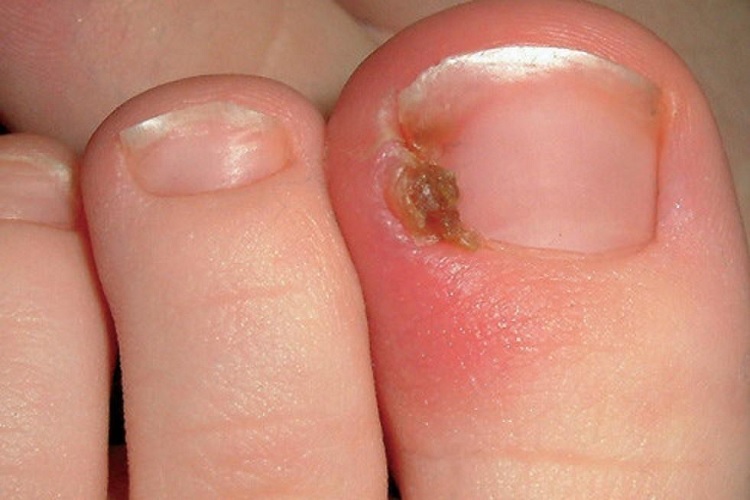A toenail that grew into the skin rather than over it is called an ingrown toenail.
While it often only affects the big toe, there are instances when it also develops in the other toes.
Anyone can have an ingrown toenail.

However, adults are more susceptible compared to children. The condition is also prevalent among older adults. People who have thick or curved nails are also more likely to develop the condition.
Once the ingrown toenail becomes infected, it will turn red, swollen, and may drain pus. It can also become very painful.
Depending on the severity, treatment options can range from home remedies to ingrown toenail surgery.
Causes
Some of the common causes of ingrown toenail are:
- Cutting the toenails too short
- Injury to the toenail
- Unusually curved toenails
- Wearing footwear that crowds the toenail
- Not cutting the toenails straight across
Symptoms
Some of the most prevalent signs that indicate an ingrown toenail include:
- Redness around the affected toenail
- Swelling
- Tenderness and pain in the toe or on the sides of the nail
- Tissue infection
Other alarming symptoms that should merit a doctor’s visit are:
- Severe pain and discomfort
- Rednessthat seems to be spreading
- Pus in the affected area
- If you have diabetes or other medical conditions that will cause poor blood flow to the feet
Complications
Left undetected or untreated, an ingrown toenail can result to serious bone infection especially when it infects the underlying bone.
The condition can also cause severe complications especially if you have diabetes and may even lead to nerve damage.
For people with diabetes, a minor foot injury—scrape, corn, cut, callus, and even an ingrown toenail—may become infected and may not heal properly.
Appointment
If alarming symptoms manifest or if you have diabetes, visiting your doctor is a must.
Since appointments can sometimes be brief, it would be best to come prepared so you will be able to make the most out of the visit.
Prepare a list of key questions you need to ask.
Some of the grounds you need to cover should include:
- What are the likely treatment options?
- What are the pros and cons of each?
- Is the condition chronic or temporary?
- Is it possible for the condition to heal on its own?
- What are the possible results after the treatment?
- What nail care regimen should be observed while the toe heals?
In the same manner, it would also make everything faster if you come prepared with answers for some likely questions the doctor will ask such as:
- When did the symptoms begin?
- Do you experience it all the time?
- What at-home remedies have you tried?
- Do you have diabetes or any other medical condition that may cause poor blood flow to the feet or legs?
Treatment
Mild cases of ingrown toenails often respond to home remedies.
Here’s how to treat ingrown nails at home:
- Soak the feet in warm water for at least 15 to 20 minutes. This should be done at least 3 to 4 times daily. Soaking can relieve tenderness and reduce swelling.
- Place dental floss or cotton under the toenail. This method will help ensure the nail will grow above the edge of the skin.
- Put antibiotic cream on the affected area. Bandage the toe right after.
- Wear proper footwear. At least for the time being, opt for sandals and open-toed shoes until your toe heals.
- Take over-the-counter pain relievers. Medications to minimize the pain can include naproxen sodium (Aleve), acetaminophen (Tylenol), and ibuprofen (Motrin IB, Advil).
For severe cases, ingrown toenail surgery might be required.
- Partial nail removal. For cases that come with alarming symptoms like swelling, redness, pain, and pus, the doctor will most likely remove or trim at least a portion of the nail. Prior to the procedure, an anesthetic will be injected to numb the toe.
- Nail and tissue removal. If the problem has affected the same toe more than once, the doctor may recommend removing a portion of the nail as well as the nail bed (underlying tissue). This procedure will prevent the affected part of the nail from growing back.

